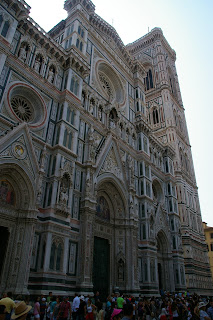Lugano, Locarno and
Orta San Guilio
 |
| Courtesy of Google Maps |
We had a long day ahead of us as we clambered onto our coach
for a two hour trip to Lake Lugano and the town of Lugano, the capital of the
Swiss Riviera. There was some doubt as we set out as to whether we actually get
into Lugano as there was an annual Harley Davidson rally on this weekend and
the streets could have been blocked off.
We were fortunate that we were able to get quite close into the town
centre where we were to have lunch.
At the Swiss border, our driver had to pay a road tax of about
€50. Fortunately, the Swiss Customs were
not interested in a bus load of Australian tourists. An important consideration each day is
finding a public toilet in Italy and Switzerland. We got around this today by locating a
department store which had a restaurant, and also a toilet.
Lugano is a typical Swiss organised, tidy and expensive town
with a nice waterfront mixed with some older buildings of character.
 |
| Lugano |
The road
to Locarno was predominantly via motorway with substantial tunnel and viaduct.
Locarno had some similarities to Lugarno but was probably more attractive and
cheaper. We discovered a refreshing non-alcoholic refreshing drink called
‘Rivella’. It has been very hot and keeping hydrated with questionable water
quality in some towns, is not that easy. Fortunately, the driver has a supply
of cooled water bottles for €1. One of the tricky aspects with the two Swiss
towns was the use of Swiss Francs. We had some left over from our earlier stint
in Switzerland but ended up using some euros but receiving change on Swiss
Francs. Before we left we only had a small amount of small change left over.
 |
| Locarno |
The drive south from Locarno was along tight twisting road
cut into the mountains abutting the western edge of Lake Maggiore. The scenery
was impressive as Italians have imposed human occupation and infrastructure
into a constrained environment. This results in extensive use of tunnels and bridges
and abutments hanging off the sides of the mountains. At times the road narrows
to one lane and on several occasions our bus and opposing trucks or buses had
to negotiate for space.
 |
| The road to Orta San Giulio |
Our destination was the small town of Orta San Giulio,
beside Lake Orta, a lake with clean spring-fed water from below the mountains. This
is a part of the Italian Lakes that the tourists as yet don’t know about, so I hesitate
to write about it. On the above map, it
is below Omegna, about half way down the eastern side of Lake Orta. The group caught a water-taxi to Isola San Guilio,
a small island in the lake where a Basilica dedicated to Saint Guilio is
found. The chapel has some amazing frescoes,
and the body of San Guilio of Navarra, encased in an impressive silver and
glass casket, lies in the crypt. He was the local patron saint. It is an unusual island, now a Benedictine
Abbey, quiet, aged and peaceful, and we paid a respectful visit.
 |
| Isola San Giulio |
Back at Orta, we relaxed and strolled through the quiet,
cobbled streets and explored the quaint little shops. There was a very impressive art gallery and
lots of cultural events happening.
The
sound of a piano being played skillfully, drew us into a small café. The menu was in Italian, but the waiter was
able to interpret for us and some friends.
We had great food and great service.
A dessert of strawberry cheesecake, unlike any he had had before was a
delight for Doug, and their apple cake was excellent. The waterfront was a lovely area to chill as the
sun set over the lake.






















































